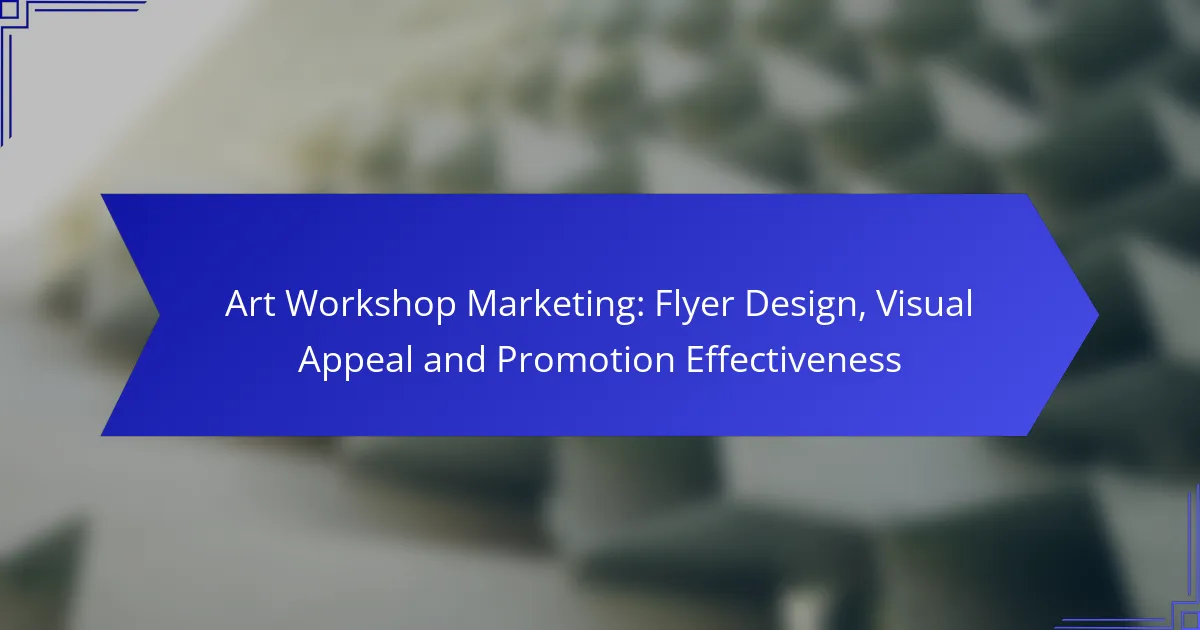Creating an effective flyer for art workshops involves a strategic blend of eye-catching visuals and clear, concise information. By emphasizing strong design elements and a compelling call to action, you can significantly enhance participation. Additionally, leveraging multiple marketing channels will help reach your target audience more effectively, ensuring your workshop stands out in a crowded marketplace.
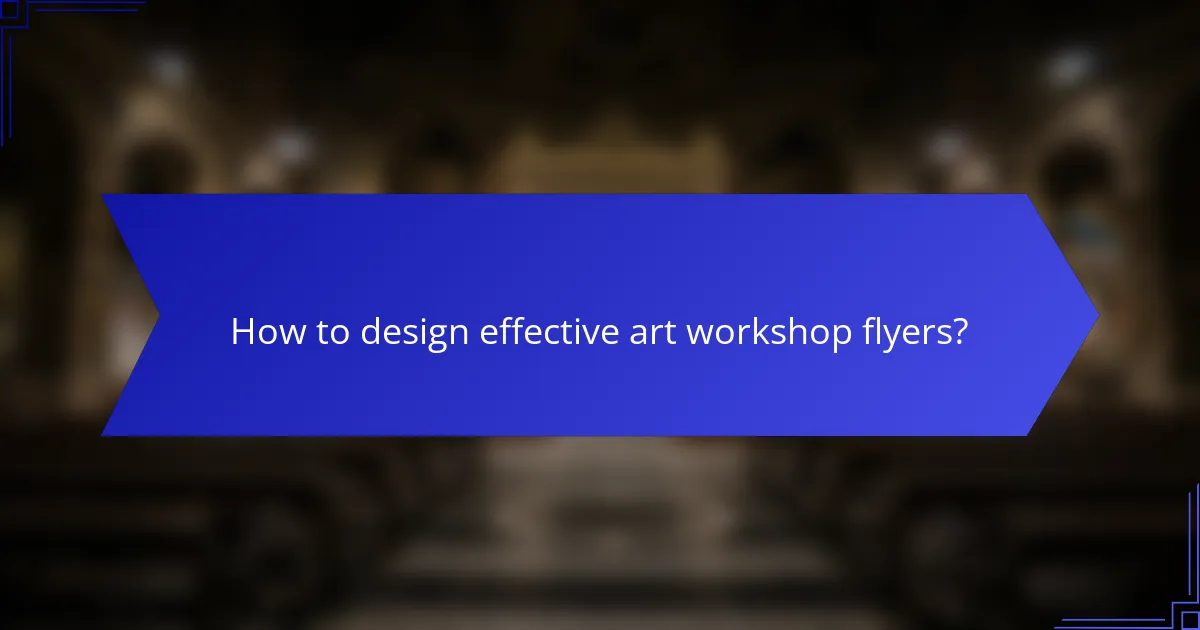
How to design effective art workshop flyers?
Effective art workshop flyers should capture attention and convey essential information clearly. Focus on strong visuals, legible text, and a compelling call to action to ensure your flyer stands out and drives participation.
Use bold visuals
Bold visuals are crucial for grabbing attention and conveying the essence of your art workshop. Use high-quality images of artwork or engaging graphics that reflect the theme of the workshop. Consider incorporating illustrations or photographs that evoke creativity and excitement.
Ensure that visuals are not cluttered; a single striking image can often be more effective than multiple smaller ones. Balance the visual elements with white space to enhance overall readability and impact.
Incorporate clear typography
Clear typography is essential for ensuring that your flyer is easy to read from a distance. Use a combination of font styles to create a hierarchy of information, such as bold headings for the workshop title and simpler fonts for details. Limit the number of different fonts to maintain a cohesive look.
Choose font sizes that are appropriate for various sections, ensuring that the most important information stands out. Avoid overly decorative fonts that can hinder readability, especially for essential details like dates and locations.
Highlight key information
Highlighting key information helps potential participants quickly grasp the essentials of your workshop. Use bullet points or bold text to emphasize important details such as the date, time, location, and cost. This makes it easier for readers to find what they need at a glance.
Consider including a brief description of the workshop’s objectives and any materials provided. This additional context can help attendees understand the value of participating and encourage them to sign up.
Utilize color psychology
Color psychology plays a significant role in how your flyer is perceived. Different colors evoke various emotions; for example, blue can convey trust and calmness, while red can evoke excitement and urgency. Choose a color palette that aligns with the theme of your workshop and resonates with your target audience.
Use contrasting colors for text and background to enhance readability. Ensure that the colors are not overwhelming; a harmonious palette can create a more inviting and professional appearance.
Include a call to action
A strong call to action (CTA) is vital for encouraging potential participants to take the next step. Phrases like “Register Now,” “Join Us,” or “Reserve Your Spot” should be prominently displayed and easy to find. Make it clear what action you want them to take and how to do it.
Consider including a QR code that links directly to the registration page or contact information for inquiries. This adds convenience and can increase the likelihood of immediate responses from interested individuals.
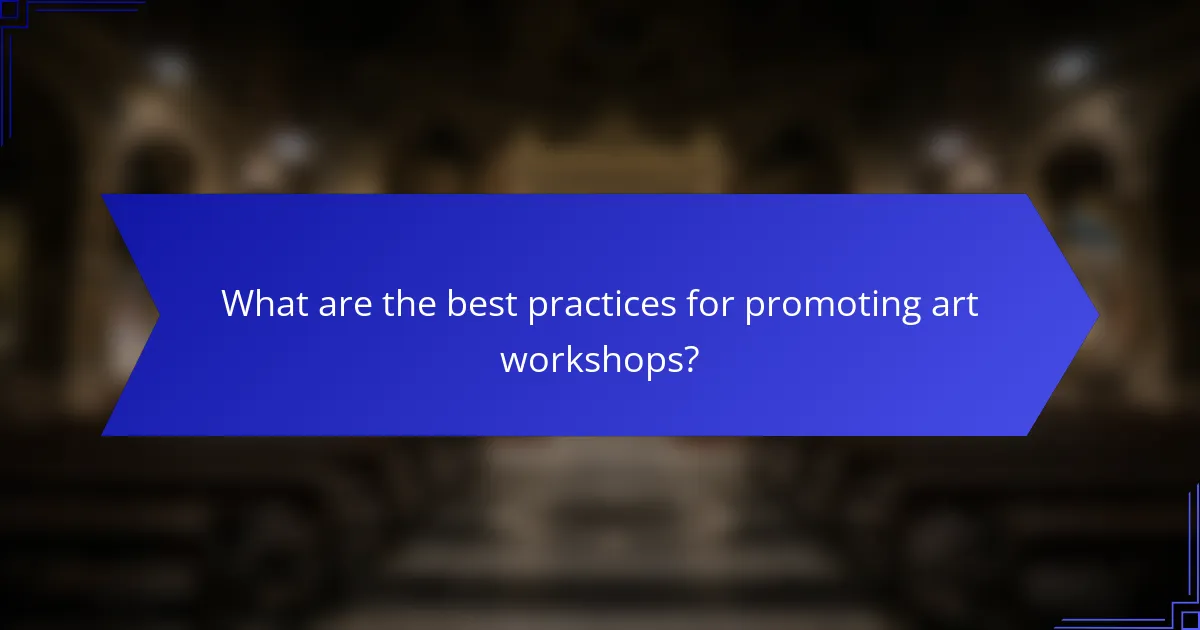
What are the best practices for promoting art workshops?
To effectively promote art workshops, focus on utilizing various marketing channels that reach your target audience. Combining social media, local engagement, email campaigns, and influencer collaborations can significantly enhance visibility and participation.
Leverage social media platforms
Social media is a powerful tool for promoting art workshops. Platforms like Instagram, Facebook, and Pinterest allow you to showcase vibrant visuals of your artwork and workshop activities, attracting potential participants. Regularly post engaging content, such as behind-the-scenes videos, testimonials, and event countdowns to build excitement.
Consider using targeted ads to reach specific demographics interested in art. Allocate a budget that suits your needs, starting with a few hundred dollars, and monitor engagement metrics to optimize your campaigns.
Engage with local art communities
Connecting with local art communities can boost your workshop’s visibility. Attend local art fairs, exhibitions, and community events to network and distribute flyers. Building relationships with local artists and art organizations can lead to cross-promotional opportunities.
Join local online forums or groups where art enthusiasts gather. Share information about your workshops and invite feedback to create a sense of community and encourage word-of-mouth referrals.
Utilize email marketing campaigns
Email marketing remains an effective strategy for promoting art workshops. Build a mailing list by offering a free resource, such as an art tutorial or a discount on the first workshop. Send regular newsletters featuring upcoming events, special offers, and engaging content related to art.
Keep your emails concise and visually appealing. Use eye-catching subject lines and include clear calls to action, encouraging recipients to register for workshops directly from the email.
Collaborate with influencers
Partnering with local influencers can amplify your workshop’s reach. Identify artists or art enthusiasts with a strong following in your area and propose collaborations, such as hosting a workshop together or having them promote your event on their channels.
Offer influencers a complimentary spot in your workshop in exchange for their promotion. This not only builds credibility but also exposes your workshop to their audience, potentially increasing registrations.
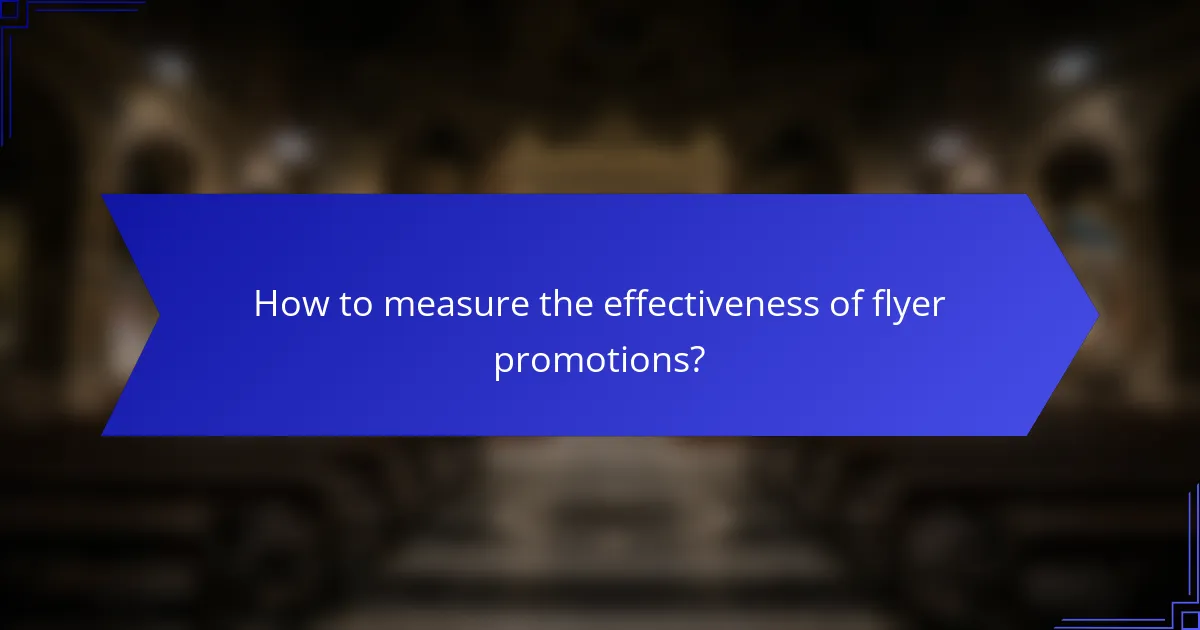
How to measure the effectiveness of flyer promotions?
Measuring the effectiveness of flyer promotions involves assessing various metrics that indicate audience engagement and response. Key methods include tracking RSVP rates, analyzing social media engagement, and gathering participant feedback to evaluate overall impact.
Track RSVP rates
Tracking RSVP rates is a direct way to measure how many people are responding to your flyer. A good target is to aim for an RSVP rate of around 10-20% of the total flyers distributed, depending on the audience and event type.
To effectively track RSVPs, consider using online tools or platforms that allow for easy registration. This can help you gather data on how many attendees plan to participate, which can inform your planning and resource allocation.
Analyze social media engagement
Social media engagement provides insights into how well your flyer is resonating with your audience. Monitor likes, shares, comments, and overall reach on posts related to your flyer to gauge interest.
Use analytics tools to track engagement metrics over time. A rise in engagement following flyer distribution can indicate that your promotional efforts are effective. Aim for a consistent increase in interactions, ideally in the range of 15-30% more than your usual posts.
Gather participant feedback
Gathering feedback from participants after the event can reveal how effective your flyer was in attracting attendees. This can be done through surveys or informal conversations, asking questions about what motivated them to attend.
Consider including specific questions about the flyer design and messaging in your feedback forms. This information can help you refine future promotions. A simple checklist for feedback could include clarity of information, visual appeal, and overall impact on their decision to attend.
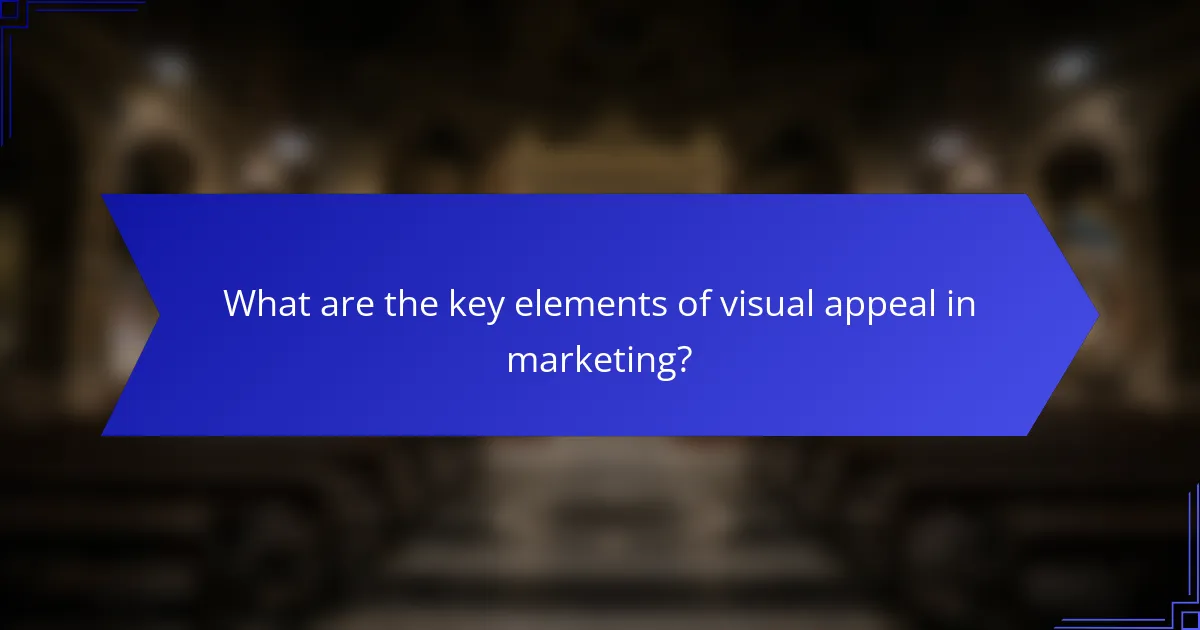
What are the key elements of visual appeal in marketing?
Visual appeal in marketing is crucial for capturing attention and conveying messages effectively. Key elements include consistent branding, high-quality images, and effective layout design, all of which work together to create a compelling visual experience.
Consistent branding
Consistent branding ensures that all marketing materials reflect the same identity, which helps build recognition and trust. Use the same colors, fonts, and logos across flyers and other promotional items to create a cohesive look.
For example, if your art workshop uses a specific color palette, make sure it appears on all flyers, social media posts, and emails. This consistency reinforces your brand and makes it easier for potential attendees to remember your workshop.
High-quality images
High-quality images are essential for attracting interest and conveying professionalism. Use clear, well-lit photographs of your artwork or previous workshops to showcase what participants can expect.
Consider using images that depict people engaging in the workshop, as this adds a personal touch and can evoke emotions. Aim for images that are at least 300 DPI for print quality, ensuring they look sharp and appealing.
Effective layout design
An effective layout design organizes information clearly and guides the viewer’s eye. Use a balanced combination of text and images, ensuring that key details like dates, times, and registration information stand out.
Utilize white space strategically to avoid clutter and make the flyer easy to read. A good rule of thumb is to keep text to about 20-30% of the flyer, allowing images and white space to dominate the design.
